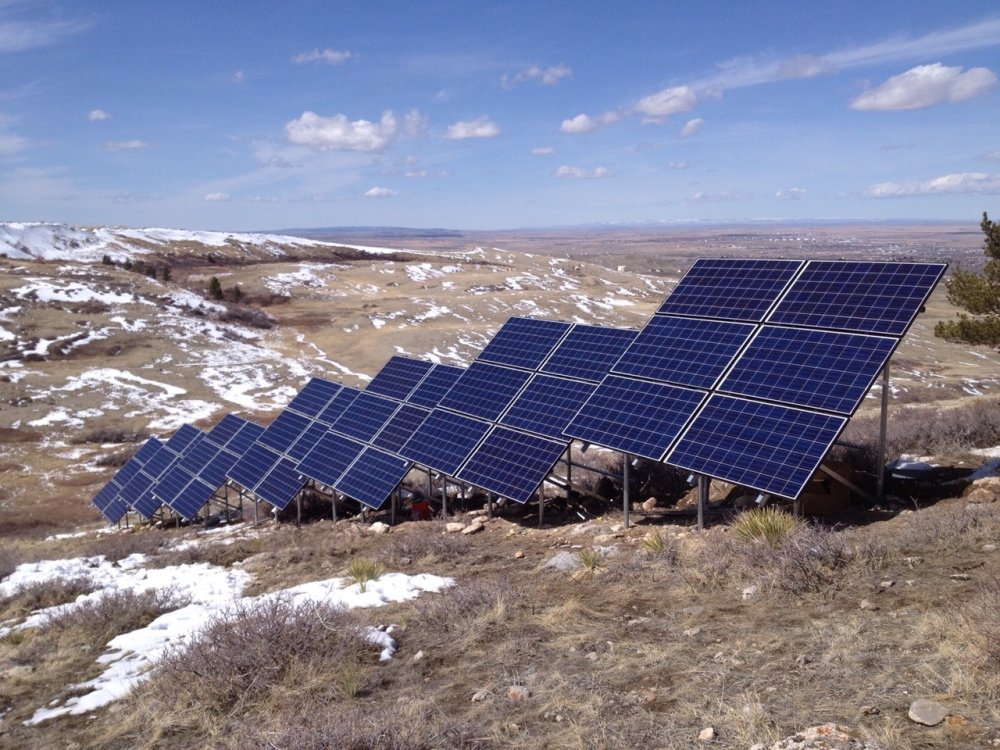The Wyoming Industrial Development and Siting Act governs the permitting of large-scale projects, including renewable energy projects, data centers, refining, manufacturing, and carbon capture to name a few. Established over 40 years ago, the Act and subsequent regulations created a fairly predictable process:
- Project proponent meets with the Industrial Siting Division at Wyoming’s Department of Environmental Quality to determine whether the project must obtain a permit.
- Project proponent prepares a permit application consistent with the applicable statutes and associated regulations and submits that application for the Industrial Siting Division to review.
- Contested case hearing before the Industrial Siting Council who has final approval over permit applications. See id. at §§ 109, 110, 113.
Predictable now unpredictable
Seems simple, right? But the devil is in the details. Over time, the increasingly difficult and risky part of the process comes after application submittal and before Siting Council approval. During this time, the Siting Division reviews the completeness of the permit application. While similar to many permitting regimes, the Siting Division’s review differs because the Division does not conduct any substantive evaluation of the contents of an application.
The substantive review falls to what the Act calls reviewing agencies. The 19 reviewing agencies receive a copy of the permit application from the Siting Division and can then provide comments. These agencies include Wyoming Game & Fish, the Wyoming Department of Transportation, the Department of Health, the Office of State Lands and Investments, and the Oil and Gas Conservation Commission. See id. at § 110(b).
Reviewing agencies have no actual jurisdiction over the permit process but in recent years have exerted great influence and created challenges for project proponents. Critically, the agencies can request the permit applicant take additional measures or provide more or different information. The Siting Division Administrator then determines whether to recommend to the Siting Council that any comments become special permit conditions. Under the Act, special permit conditions become enforceable terms of a permit once approved by the Siting Council and can even prevent construction if the project proponent does not fulfil those conditions.
Agency comments now mandates
By now, you likely wonder, “so what?” Simple. In recent years, the Siting Division has changed from evaluating reviewing agency comments as input to reviewing agency comments as mandatory permit conditions. But the reviewing agencies rarely write their comments in a way that easily translates into a specific condition a project can fulfill. And on several occasions reviewing agencies did not actually want their comments to become conditions. For instance, Wyoming Game & Fish often suggests that construction begin before or halt during certain nesting seasons. But the agency has to this point never wanted a construction halt mandated. Yet the Siting Division has attempted to impose such a halt.
Worse still, the comments converted into proposed conditions can affect critical aspects of a project, ranging from schedule to project cost. For example, the Division has attempted to impose a condition that would have delayed a project’s construction by two years to allow for preconstruction surveys and monitoring for certain wildlife. Had this condition received Siting Council approval, that particular project would have either suffered significant delay or not happened at all because of an inability to complete the project by the time required in the project’s power purchase agreement.
And these are not the only examples. Based on agency comments in recent years, the Siting Division has crafted conditions that imposed additional mitigation measures, more studies of both environmental and socio-economic aspects of a project, and changes to site design. Once approved by the Siting Council, the conditions create cost, time, and schedule burdens for those projects. One such example is a recent wind project that because of special conditions had to conduct additional studies and develop new mitigation plans that may very well delay construction.
Early, ongoing engagement is key
It’s not all doom and gloom. Several lessons have emerged from projects that have successfully and unsuccessfully battled difficult or onerous permit conditions arising from reviewing agency comments.
First, engage early with reviewing agencies. Early and ongoing discussions with agencies like Wyoming Game & Fish have highlighted mitigation measures or studies a project proponent can include in a permit application to preclude potential comments. This proactive engagement allows the agency and applicant to cooperatively craft language for potential permit conditions, which can be critical to overall permit success.
Second, have as much dialogue with the Siting Division as you can. The Siting Division has a small staff and increasing workload. Project proponents who are available to answer questions and talk through reviewing agency comments stand a better chance of heading off harmful permit conditions.
Third, if you have to fight a proposed permit condition, do so before you get to the contested case hearing with the Siting Council. The project applicant will typically have 3 to 4 weeks between the Siting Division Administrator announcing proposed conditions and the date of a contested case hearing. That window represents the last, best chance to eliminate or alter proposed permit conditions through engagement and negotiation with the Siting Division, reviewing agency, or both. The Siting Council disfavors permit applicants using a contested case hearing to argue against proposed permit conditions. The Siting Council has also been reticent to change or alter conditions at this stage. A battle before the Siting Council may need to happen. But it should be a last resort.
Lean into relationships
Finally, cultivating relationships and relying on people who have relationships with the Siting Division and reviewing agencies makes the first three lessons work. Wyoming is a small state where credibility and reputation matter, especially when trying to get access to state agencies. Drawing on a relationship can often open doors and facilitate dialogue that can head off damaging permit conditions at the right stage of the process.
As renewable energy projects, data centers, and carbon capture projects increase in Wyoming, the Industrial Siting Process will take center stage. It seems inevitable that additional scrutiny by reviewing agencies and greater political awareness of the process will follow. This means the challenges with proposed permit conditions are likely to get worse. But drawing on the lessons of past projects should help new project proponents navigate the pitfalls and emerge from the permitting process positioned for success.

Jeffrey Pope is a partner in Holland & Hart’s Cheyenne, Wyoming office. Jeff helps companies navigate the industrial siting process in Wyoming, securing permits for carbon capture projects, data centers, large commercial wind and solar facilities, and refining operations. As a litigator, he also represents mining, oil and gas, refining, pipeline, construction, and other businesses before state and federal courts. He also leads the Wyoming appellate practice.
The views and opinions expressed in this article are the author’s own, and do not necessarily reflect those held by pv magazine.
This content is protected by copyright and may not be reused. If you want to cooperate with us and would like to reuse some of our content, please contact: editors@pv-magazine.com.








By submitting this form you agree to pv magazine using your data for the purposes of publishing your comment.
Your personal data will only be disclosed or otherwise transmitted to third parties for the purposes of spam filtering or if this is necessary for technical maintenance of the website. Any other transfer to third parties will not take place unless this is justified on the basis of applicable data protection regulations or if pv magazine is legally obliged to do so.
You may revoke this consent at any time with effect for the future, in which case your personal data will be deleted immediately. Otherwise, your data will be deleted if pv magazine has processed your request or the purpose of data storage is fulfilled.
Further information on data privacy can be found in our Data Protection Policy.